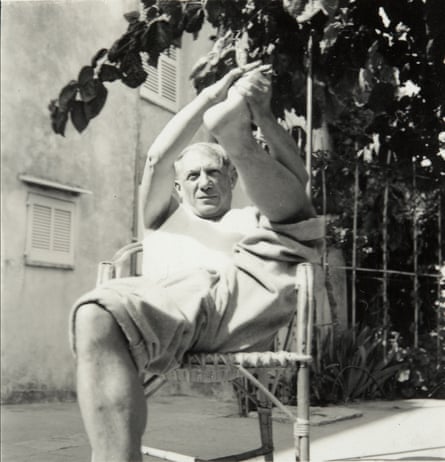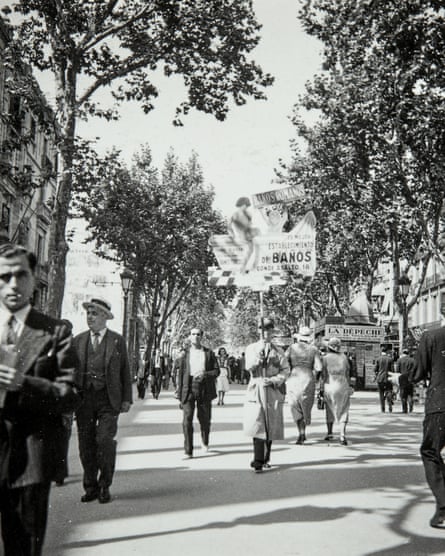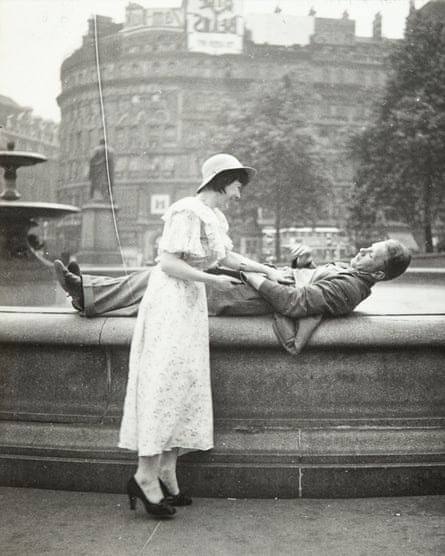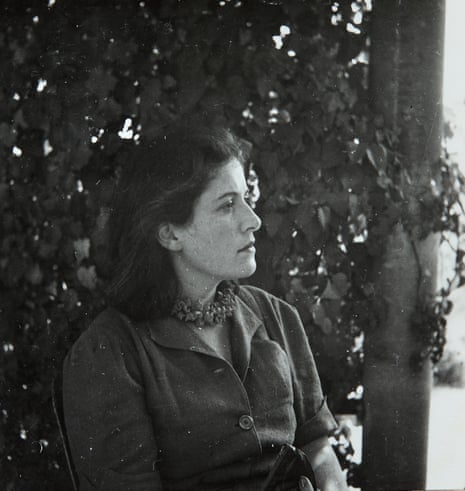To many, she is La Femme qui Pleure, the weeping woman whose anguish was portrayed in a series of paintings by Pablo Picasso, to whom she was both mistress and muse.
In truth, Dora Maar, the model for the paintings, was an artist in her own right before she met the lover who would cast a long shadow over her life and work.
Now a collection of mostly unknown and unpublished photos by Maar that capture a historic moment in European art and history – including shots of Picasso – and that would later inspire her own surrealist paintings will go on sale in Paris on Monday.
About 750 images, many of them personal and taken during her years with the surrealists in Paris in the 1920s to the end of the 1940s, are being auctioned, among them several of Picasso – including a reportage of his work on his anti-war masterpiece Guernica – as well as images of him at home, in his studio and relaxing with friends on the French Riviera. In one, the artist is sitting in an armchair carved from the trunk of an olive tree. Another shows a bare-chested Picasso under a parasol in Antibes in the mid-1930s.

It was Maar’s depressingly familiar fate as a female artist to be remembered primarily as one of the womanising Picasso’s spurned lovers.
Born in 1907 Henriette Théodora Markovitch, to a French mother who owned a fashion boutique and a father who was a Croatian architect, Maar was a gifted photographer and painter. She began her career photographing fashion models then moved into advertising. Her pictures of Paris’s street children echo those made famous later by Robert Doisneau and Marilyn Stafford.
In 1936 Maar, who by then had her own photographic studio, met Picasso in Paris – he was almost three decades her senior – and became his lover and muse. At the time the Spanish-born artist was in a long-running relationship with Marie-Thérèse Walter, the mother of his daughter Maya, and is said to have delighted in playing the two women off against each other, remaining with Walter throughout his affair with Maar.
For the next nine years Maar created her own images, but also chronicled the life and work of her lover, capturing his progress on Guernica in 1937 and even painting a small section of the canvas. The auction also includes photographs of Picasso’s sculptures including La Femme au Vase and Tête de Femme, which featured in the 1937 Universal Exhibition in Paris.

Maar’s photos of the Surrealist group centred in pre-war Paris, which included photographers Man Ray and Jean Cocteau for whom she also posed, André Breton, Jacqueline Lamba, Alberto Giacometti, Méret Oppenheim, Paul Éluard and Lee Miller, have featured in books and exhibitions. Some of the images being sold will look familiar, having come from the same photoshoots as published pictures, but auction house Artcurial says the photographs being sold in 400 lots – with the original negative, contact sheet and a modern print – are mostly previously unseen and unpublished. The collection also includes self portraits, nudes including those of Lamba, who was married to Bréton, and other images Maar later used in her paintings.
As well as capturing a chapter of 20th-century art history, the gritty photographs of disabled, blind, wounded, poor and dispossessed people in urban Spain and the UK also document the economic crisis sweeping prewar Europe in the 1930s.
After the war, Maar – who split from Picasso in 1945 when he left her for the artist Françoise Gilot – suffered a brief breakdown and reportedly underwent electroconvulsive therapy. Though she continued painting until her death in 1997 aged 89, her life was so overshadowed by his that it took the French newspaper Le Monde 10 days to mark her passing.
“While Dora Maar spent nine years of her life alongside Picasso, she also succeeded superbly in creating her own independent and personal work, using a medium that Picasso never embraced – photography. As such, Dora Maar can be seen as one of the most original photographers of her day, a true pioneer of the mid-20th century,” Bruno Jaubert, director of Artcurial’s impressionist and modern art department told the Observer.

“Dora Maar had no children, so these negatives have been in the archives of her estate since she died. They were all taken with the Rolleiflex she used and cover 20 years of work. They are of an unusual character and through them we see a side of Dora Maar the artist and photographer, that we do not know.”
Although Picasso painted Maar many times, she was not impressed with his representations of her. “All [his] portraits of me are lies. Not one is Dora Maar,” she once said.
